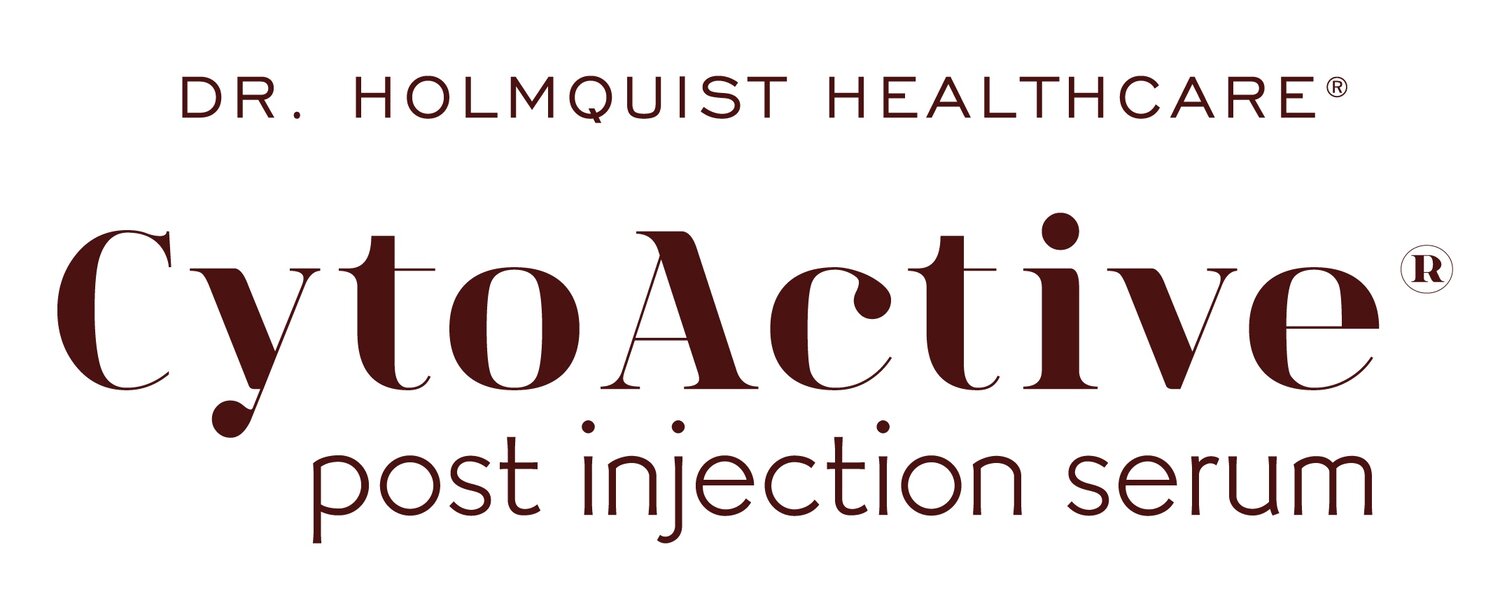Research Results
Title: A double-blinded, randomized, placebo-controlled split-face, within-subject evaluation of a bruise reduction serum.
Background: Many patients experience bruising after certain cosmetic procedures. Filler injections, Botox injections and sclerotherapy procedures report bruising as one of the most common complaint. Recently, excellent peer-reviewed studies have also demonstrated that hydration by glycerol may have therapeutic value as well. Work by Dr. Wendy Bollinger Bollag (Medical College of Georgia) and her co-author Dr. Xiangjian Zheng (Vanderbilt University) strongly suggests that glycerol makes skin look better and function well by helping skin cells mature more quickly1.
Glycerin will “transport” both water and other substances though the Aquaporin channels into the sub-dermal layers of the skin and fat cells. Bruise Relief takes advantage of glycerin’s properties as a “transporter” to introduce distilled water, vitamins and oils which are helpful to skin healing and which promote the rapid disappearance of bruising and discoloration. Oil of Evening Primrose and Vitamin E (oil) are the additional active ingredients.
Oil of Evening Primrose contains naturally occurring Vitamin C and omega-6 essential fatty acids and is an excellent “skin softener” for the surface of the skin. Softening and hydrating the surface of the skin will makes it more elastic and less opaque, thereby hiding the appearance of a sub dermal bruise. Vitamin E (oil) is essential to help damaged or injured epidermal (surface) skin cells heal more quickly and appear more healthy and opaque. This proprietary formula absorbs into the interstitial space, resulting in displacement of any pooling blood.
The compression of damaged vessels decreases procedure-related bruising before it can fully form. There is no issue with patient compliance pre or post procedure, since the product is applied by physician or the physician assistant. Advanced benefit may be seen from continued use for the next 24 hours, but that was not studied with this trial.
Although he was not initially certain of why the old remedy worked so well to minimize the appearance of bruises, he came to recognize that the primary ingredient in CytoActive®, glycerin, combined with our other ingredients is remarkable and unique in its ability to help clear existing bruises rapidly and help prevent post procedural bruising.
Methods: Patients coming in for routine filler injections were advised of the study and recruited to participate. Immediate post-procedural massage was done with the product on one side of the face and a placebo on the other side of the face. The study was randomized for left and right sides of the face and symmetry was a required outcome. Each patient was called one day and seen 7 days post injection. Diary of bruising was kept and evaluation of symmetry and clinical result was performed.
IRB approved protocol and questionnaire.
Results: 25 people participated in the study. Of the 25 participants, 8 experienced no bruising and 17 did experience bruising. 65% of the 17 patients who experienced bruising realized a statistically significant reduction in the frequency, severity and duration of bruising with a single post-procedural application. The product was well tolerated, with no side effects. The probability (p) values for 1-day and 7-day were 0.0796 and 0.0727, respectively; therefore the results are not random.
Conclusions: The serum resulted in a statistically significant reduction in frequency, severity and duration of bruising. This product was well tolerated, with no side effects. The most common treatment-related complication from filler injections is bruising. There are many potential applications for this product in cosmetic practices – not only for filler injections, but also for Botox injections and leg-vein injections (sclerotherapy). As such, it may be an important tool to improve post-procedure recovery time.
1 [Zheng, Xiangjian and Wendy Bollinger Bollag “Aquaphorin 3 Colocates with Phospholipase D2 in Caveolin-Rich Membrane Microdomains and is Downregulated upon Keratinocyte Differentiation”, J of Invest Derm, Vol. 121, No. 6 (December 2003):1487-1495.]
2 [Zheng, et al, “Modulation of phospholipase D-mediated phosphatidylglycerol formation by differentiating agents in primary mouse epidermal keratinocytes” Biochemical et Biophysical Acta 1643 (2003): 25-36.]
3 [Bollag, WB., et al “A Potential Role for the Phospholipase D2-Aquaporin-3 Signaling Module in Early Kerotinocyte Differentiation: Production of a Phosphatidylglycerol Signaling Lipid” J of Invest Derm, 28 June 2007. ]
For more information call (985) 801-0513 or inquire today about how to purchase CytoActive® Post Injection Serum.


